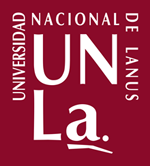What do you see when you see me? About what the proximity programs show about social policies in Uruguay.
Abstract
In 2005, the national government assumes the
Uruguay a left-wing political force (Frente
Large). In a context marked by the consequences
Of the crisis of 2002, developed as a
Of its basic lines of action, the assistance
To poverty. This is expressed in the creation
Ministry of Social Development and the implementation of
Of various social programs. From
2012, the second government of Frente Amplio, develops
Proximity Programs: Uruguay Grows
With you, Youth in Network and Neighborhoods. These are
Innovators as they develop
Work with the target population
And are of inter-institutional nature. This work
Focuses on the relationship between these programs and
The remaining State benefits, considering
Design and implementation. Interest problematizing
What is the existence of these programs
Allows you to view the operation of the
Social policies in present-day Uruguay. It concludes
That the relationship between proximity programs
And the remaining State benefits are absent
At times, complex in others and with risks of
Lack of responsibility for part of the benefits
Not targeted. The existence of programs
Of proximity is a new expression
Inequality in access to public policies
And more broadly, another sample of inequality
Social persistence.






